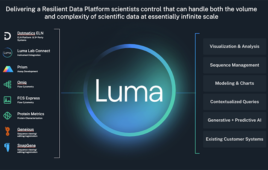In today’s manufacturing plants, large metal cages protect humans from heavy robotic machinery. New MIT research may uncage robots, allowing them to work safely alongside people. |
In
today’s manufacturing plants, the division of labor between humans and robots
is quite clear: Large, automated robots are typically cordoned off in metal
cages, manipulating heavy machinery and performing repetitive tasks, while
humans work in less hazardous areas on jobs requiring finer detail.
But
according to Julie Shah, the Boeing Career Development Assistant Professor of
Aeronautics and Astronautics at Massachusetts Institute of Technology (MIT),
the factory floor of the future may host humans and robots working side by
side, each helping the other in common tasks. Shah envisions robotic assistants
performing tasks that would otherwise hinder a human’s efficiency, particularly
in airplane manufacturing.
“If
the robot can provide tools and materials so the person doesn’t have to walk over
to pick up parts and walk back to the plane, you can significantly reduce the
idle time of the person,” says Shah, who leads the Interactive Robotics Group
in MIT’s Computer Science and Artificial Intelligence Laboratory (CSAIL). “It’s
really hard to make robots do careful refinishing tasks that people do really
well. But providing robotic assistants to do the non-value-added work can
actually increase the productivity of the overall factory.”
A
robot working in isolation has to simply follow a set of preprogrammed
instructions to perform a repetitive task. But working with humans is a
different matter: For example, each mechanic working at the same station at an
aircraft assembly plant may prefer to work differently—and Shah says a robotic
assistant would have to effortlessly adapt to an individual’s particular style
to be of any practical use.
Now
Shah and her colleagues at MIT have devised an algorithm that enables a robot
to quickly learn an individual’s preference for a certain task, and adapt accordingly
to help complete the task. The group is using the algorithm in simulations to
train robots and humans to work together, and will present its findings at the
Robotics: Science and Systems Conference.
“It’s
an interesting machine-learning human-factors problem,” Shah says. “Using this
algorithm, we can significantly improve the robot’s understanding of what the
person’s next likely actions are.”
Taking wing
As a test case, Shah’s team looked at spar assembly, a process of building the
main structural element of an aircraft’s wing. In the typical manufacturing
process, two pieces of the wing are aligned. Once in place, a mechanic applies
sealant to predrilled holes, hammers bolts into the holes to secure the two
pieces, then wipes away excess sealant. The entire process can be highly
individualized: For example, one mechanic may choose to apply sealant to every
hole before hammering in bolts, while another may like to completely finish one
hole before moving on to the next. The only constraint is the sealant, which
dries within three minutes.
The
researchers say robots such as FRIDA, designed by Swiss robotics company ABB,
may be programmed to help in the spar-assembly process. FRIDA is a flexible
robot with two arms capable of a wide range of motion that Shah says can be
manipulated to either fasten bolts or paint sealant into holes, depending on a
human’s preferences.
To
enable such a robot to anticipate a human’s actions, the group first developed
a computational model in the form of a decision tree. Each branch along the
tree represents a choice that a mechanic may make—for example, continue to
hammer a bolt after applying sealant, or apply sealant to the next hole?
“If
the robot places the bolt, how sure is it that the person will then hammer the
bolt, or just wait for the robot to place the next bolt?” Shah says. “There are
many branches.”
Using
the model, the group performed human experiments, training a laboratory robot
to observe an individual’s chain of preferences. Once the robot learned a
person’s preferred order of tasks, it then quickly adapted, either applying
sealant or fastening a bolt according to a person’s particular style of work.
Working side by side
Shah says in a real-life manufacturing setting, she envisions robots and humans
undergoing an initial training session off the factory floor. Once the robot
learns a person’s work habits, its factory counterpart can be programmed to
recognize that same person, and initialize the appropriate task plan. Shah adds
that many workers in existing plants wear radio-frequency identification (RFID)
tags—a potential way for robots to identify individuals.
Shah
says robotic assistants may also be programmed to help in medical settings. For
instance, a robot may be trained to monitor lengthy procedures in an operating
room and anticipate a surgeon’s needs, handing over scalpels and gauze,
depending on a doctor’s preference. While such a scenario may be years away, robots
and humans may eventually work side by side, with the right algorithms.
“We
have hardware, sensing, and can do manipulation and vision, but unless the
robot really develops an almost seamless understanding of how it can help the
person, the person’s just going to get frustrated and say, ‘Never mind, I’ll
just go pick up the piece myself,'” Shah says.





